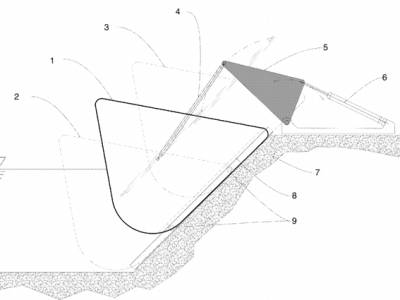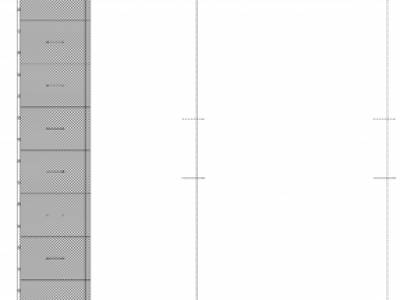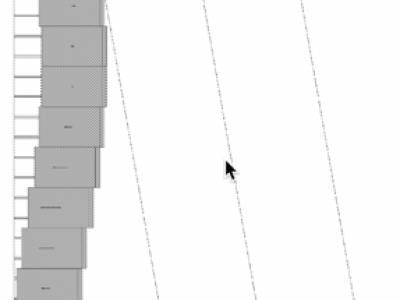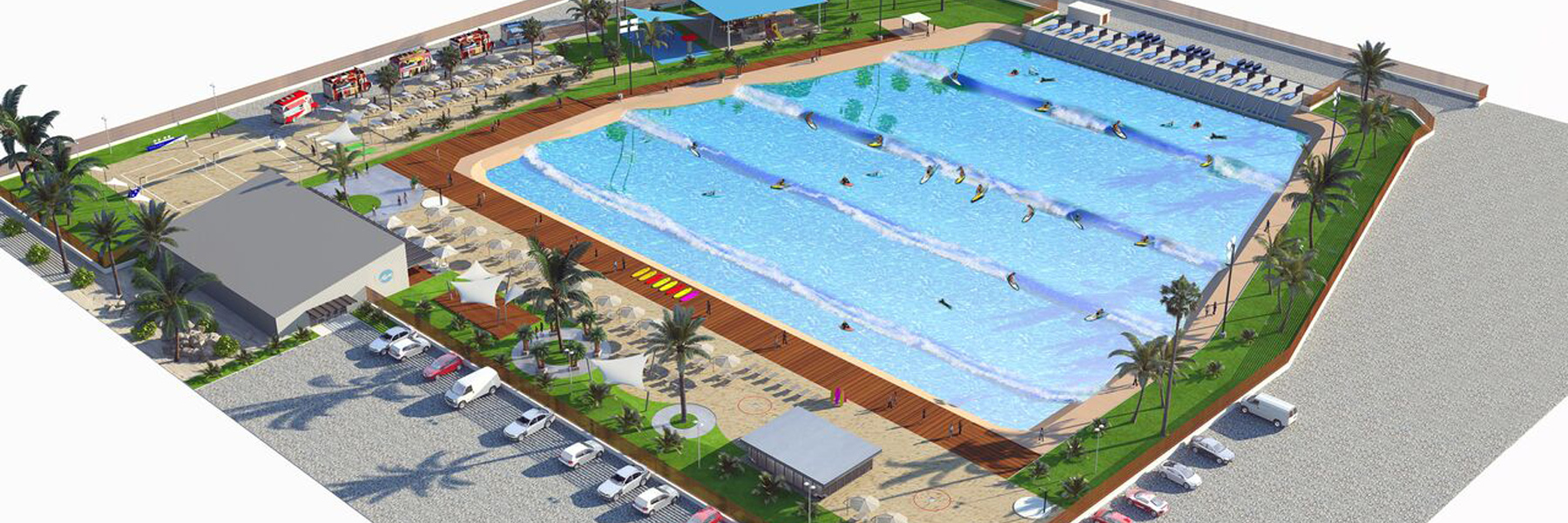SwellSpot
SwellSpot Technology
SwellSpot wave pool technology uses a modular mechanical system and hydraulic motor power to raise and lower an array of “plungers" in deeper water at the back of a pool. The plungers move in nearly synchronous motion up and down to create a swell that travels out of the modules and toward the shallow end of the pool. As the swell propagates toward the shallows, it encounters bottom contours that cause the wave to crest and break in various shapes and sizes.
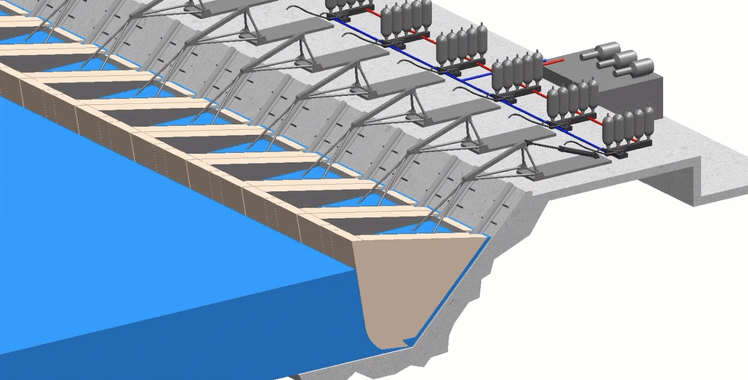
According to Walter Bennett, SwellSpot CEO, the plungers are guided up and down using hydraulics. The hydraulic system and accumulators load up pressure during lower energy cost periods, and then utilize the stored power at peak energy periods. The system is capable of continuous operation producing waves every 10-15 seconds, however for logical reasons its designed to push a swells every 12 seconds. This produces 360 swells per hour.
The modular technology gives SwellSpot technology the ability to support various pool sizes, and create a variety of wave shapes.
The images below are from various patents on the technology from Walter Bennett, founder of SwellSpot. The first diagram shows the general shape and movement of an individual plunger from a profile perspective. The second and third image show how the plunger movement can be synchronous or sequential to create various wave shapes.
Wave Shape and Size
As the wave propagates away from the array of plungers, it encounters various bottom contours (bathymetry) that make the wave crest and break.
The first area the wave encounters is the primary reef. In a SwellSpot wave pool, the primary reef will create an A-frame wave that produces a left and a right between 3 and 8′ high on the face of the wave.
The operator will use software to control the exact shape and size of the wave. With each plunger module operating individually, controlled by software, the operator can change module travel distance, wave angle, velocity and timing. This can produce near infinite variations in wave shapes. The primary reef will be capable of providing high performance waves that offer barrels, steep faces and air sections.
After the swell passes through the main surfing area, it will reform into smaller whitewater rollers on an inner reef for beginners.
The length of ride on the primary reef A-frame is 75 yards (about 12 seconds) in a 2.2 acre SwellSpot wave pool. The reformed intermediate wave ride length is about 13 seconds.
Read More
Capacity and Productivity
The capacity numbers, according to Walter Bennett, are staggering.
SwellSpot wave pools can produce a swell once every 12 seconds, or 360 swells an hour. Each one of those swells produces two rides on the primary reef A-frame reef which means a total of 720. Those same swells also create 2 similar but smaller rides in the intermediate area. Then those swells crumble into the beginner area and produce another 3000 beginner rides. The result, according to Mr. Bennett, is a wave pool that provides 10-12 waves per hour to roughly 100-150 surfing patrons per reef section.
Those numbers are far above and beyond what other wave pool technology providers offer and they have yet to be proven in a production setting.
The Wave Pool
After a swell has been generated at its desired velocity, size and direction, its shape is determined by the contours of the wave pool bottom. SwellSpot has developed a patented bottom reef design that maximizes ride length, wave quality, safety, and operational efficiency in a minimum surf lake footprint. The patented bottom allows each swell generated to break multiple times, as described in the “Capacity and Productivity" section above.
SwellSpot offers custom bathymetry as well for customers who want something more unique (like a heaving ledge wave).
The standard SwellSpot wave pool is 200 feet wide (at the back wall) and 320 feet long, which equates to 1.4 acres. That is a notably smaller footprint than other wave pools with similar ride length and capacity. Pools can be as small as 1.1 acres and as large as 2.2 acres.
At its deepest point near the plunger modules, the pool is 10 feet deep.
The pool bottom is compacted soil with a lake lining system.
Controlling SwellSpot Pools
Using software the operator can control the frequency, size and shape of the waves.
Energy Consumption
The 18 plungers used in a 2.2-acre SwellSpot wave pool will consume 450kW per hour running at full power. At $0.15 per kWh, the power to produce waves in the wave pool would cost $67.50. When you consider the capacity numbers above, the margin starts to look impressive.
Build Costs
SwellSpot is unique in their clarity around pricing. The total capital expenditure prior to opening is expected to be $1.8m for the 1.4 acre surf pool plus an additional $1.25m for the supporting infrastructure. Smaller pools will cost around $1m.
Additionally, Walter Bennett told WavePoolMag that if a customer provides the land and 20% of the cost of the pool in cash, he will finance the rest.
Contact the SwellSpot team via contact@swellspot.com or +1-804-244-0323.
Wave Pools Powered by SwellSpot Technology
None, yet. For more information on SwellSpot, please refer to their web page.
Highlights and Lowlights
| Low cost and financed by SwellSpot. | |
| High ride productivity-to-footprint ratio. |
| Unproven at full scale. |

